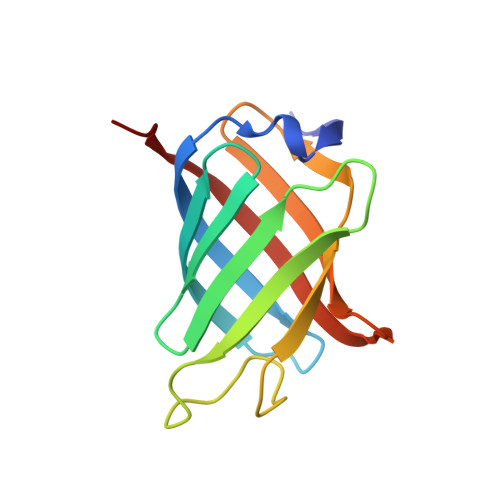Identification and characterization of the lipid binding property of GrlR, a locus of enterocyte effacement regulator.
Jobichen, C., Fernandis, A.Z., Velazquez-Campoy, A., Leung, K.Y., Mok, Y.K., Wenk, M.R., Sivaraman, J.(2009) Biochem J
- PubMed: 19228114
- DOI: https://doi.org/10.1042/BJ20081588
- Primary Citation of Related Structures:
3E3C - PubMed Abstract:
Lipocalins are a broad family of proteins identified initially in eukaryotes and more recently in Gram-negative bacteria. The functions of lipocalin or lipid-binding proteins are often elusive and very diverse. Recently, we have determined the structure of GrlR (global regulator of LEE repressor), which plays a key role in the regulation of LEE (locus of enterocyte effacement) proteins. GrlR adopts a lipocalin-like fold that is composed of an eight-stranded beta-barrel followed by an alpha-helix at the C-terminus. GrlR has a highly hydrophobic cavity region and could be a potential transporter of lipophilic molecules. To verify this hypothesis, we carried out structure-based analysis of GrlR, determined the structure of the lipid-GrlR complex and measured the binding of lipid to recombinant GrlR by ITC (isothermal titration calorimetry). In addition, we identified phosphatidylglycerol and phosphatidylethanolamine as the endogenously bound lipid species of GrlR using electrospray-ionization MS. Furthermore, we have shown that the lipid-binding property of GrlR is similar to that of its closest lipocalin structural homologue, beta-lactoglobulin. Our studies demonstrate the hitherto unknown lipid-binding property of GrlR.
- Department of Biological Sciences, National University of Singapore, Singapore.
Organizational Affiliation:

















